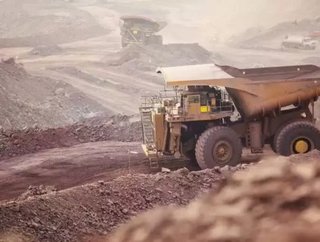Record high for Australian mining exports

The mining and energy export earnings of Australia are expected to increase by 30 percent in 2016-2017, to a small record of $204 billion.
In the latest report from the Department of Industry, Innovation and Science, continued growth in demand from China’s steel sector has provided a significant boost in export prices.
That being said, the high prices are not expected to last – with the demand from China expected to slow as well as an increase in global supplies projected to impact export unit values in 2017-2018.
Looking at the mining sector from a production viewpoint, this phase is expected to continue throughout the year. Export values are forecast to increase in each of Australia’s top five resource and energy commodities in 2017-18.
Key to this boom is a forecasted growth of LNG export volumes by a further 28 percent in 2017-18.
Here are the key findings from the report:
Record highs
The value of Australia’s resources and energy exports is forecast to increase by 30 per cent in 2016–17, to a record $204 billion, before declining marginally (by 0.9 per cent to $202 billion) in 2017–18.
Supply disruptions, including largely reversed government-mandated output restrictions in china, have had a much sharper effect on metallurgical coal prices and thermal coal prices, which in turn will flow into Australia’s export revenues in the coming few quarters.
These disruptions are temporary, with prices expecting to decline again as supply returns to the market.
It doesn’t stop there for China, higher than expected steel production has also affected metallurgical coal and iron ore prices. But as steel production slows in China, those prices will decline over the next two years.
The decline in the price of steel-making materials are forecast to be offset by a 56 per cent increase in LNG export values. The sharp rise in export values follows the large investment in Australia's LNG production capacity over the past decade.
Greatness in gains
Over the past year, Australia has generally gained market share of global resource commodities supply. The gains have come as a result of a large investment in new capacity over the past decade, low production costs and the relatively high quality of Australia’s resources. Global consumption grew in 2016 for most of the resource and energy commodities that Australia produces. However, the rate of growth was slow compared to the boom times of just a few years ago.
In broad terms, benchmark steel-making commodity prices are forecast to lose most of their 2016 gains in 2017, while prices for heating, power and transport fuels and other metals are expected to increase slightly over the next two years. Gold prices are forecast to be stable.
The Trump effect?
The effect of a Donald Trump Presidency on Australia’s resources and energy export earnings is highly uncertain. In his campaign, President-elect Trump pledged to cut taxes and raise spending on infrastructure, which should raise the United States’ demand for goods and services.
Mr Trump has also voiced support for the US coal industry, which has been squeezed by the impact of both policy change under the Obama Administration and low natural gas prices. It is unlikely that increased US coal production would pose much of a threat to Australian exports.
The way of the Dragon
The bulk of Australia’s resource commodity exports will continue to be highly dependent on global steel making and, in particular, China’s residential construction sector out to 2018.
53 per cent of Australia’s resources and energy exports in 2016–17 will be used to make steel and steel-containing products (that is, iron ore, metallurgical coal, nickel and zinc). It is estimated that 43 per cent of China’s steel production, and around 21 per cent of global steel production, is consumed by China’s real estate construction sector.
Chinese Government-mandated coal mine closures and operating restrictions have aided a significant price rally in metallurgical and thermal coal in 2016. The Chinese Government has recently partly reversed these measures, which is expected to result in price declines in 2017.
The January 2017 issue of Mining Global is live!
Follow @MiningGlobal
Get in touch with our editor Dale Benton at [email protected]






